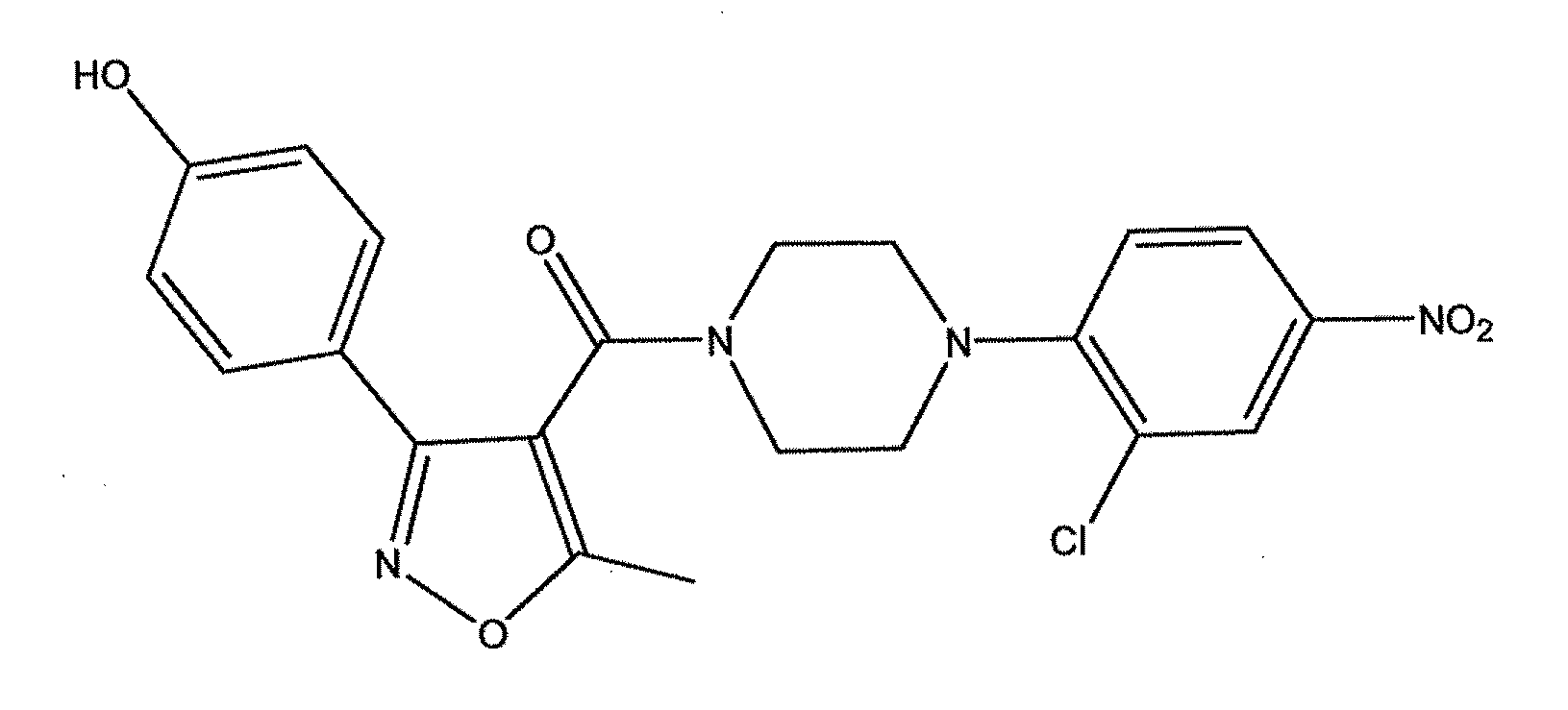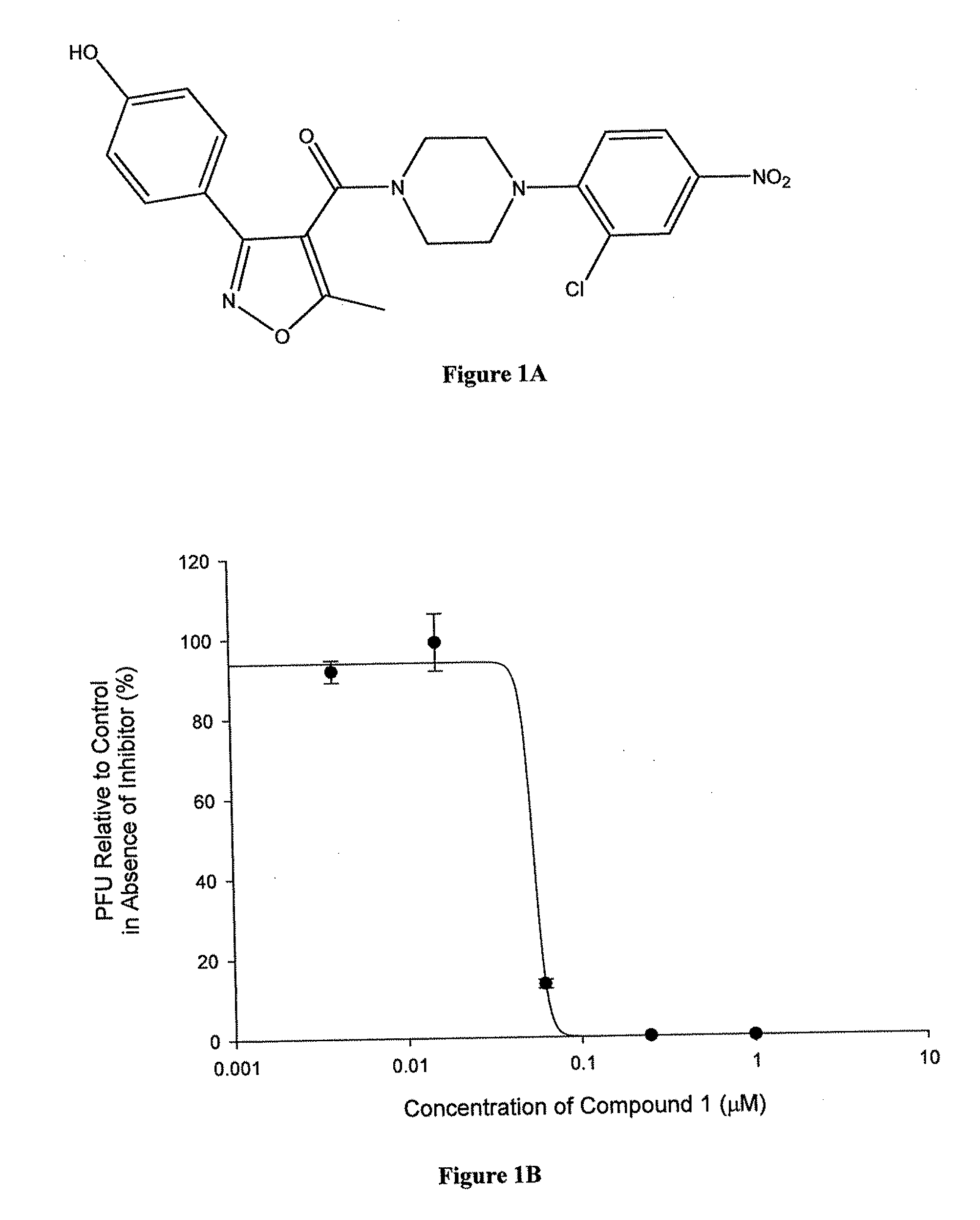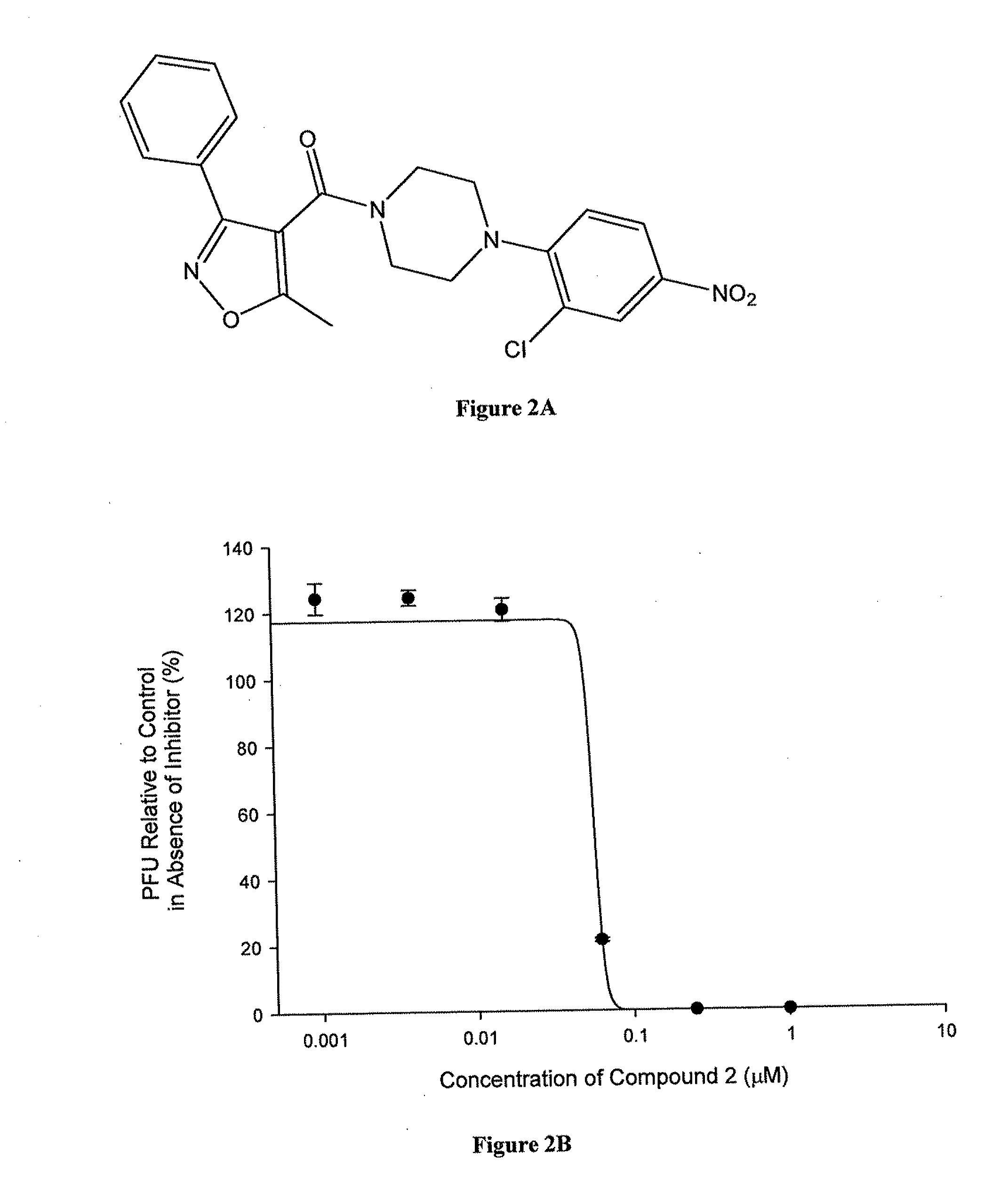Antiviral compounds and methods of making and using thereof
a technology of antiviral compounds and compounds, applied in the field of small molecules with antiviral activity, can solve the problems of zanamivir (relenza) being only administered by inhalation, unable to reach infected lung tissue that is poorly aerated, and posing environmental concerns
- Summary
- Abstract
- Description
- Claims
- Application Information
AI Technical Summary
Benefits of technology
Problems solved by technology
Method used
Image
Examples
example 1
Synthesis of Compound 1 (YD-04)
Compound 1 was synthesized according to the synthetic scheme presented in Scheme 1. Examples of variations of the synthetic scheme for the synthesis of Compounds 2, 3, and 4 are presented in Schemes 2 and 3 to illustrate the slight variations in the synthesis of other analogs of Compound 1.
Synthesis of YD-041
To a solution of p-hydroxybenzaldehyde (3.7 g, 30.0 mmol) and triethylamine (6.3 mL, 45.0 mmol) in anhydrous dichloromethane (50 mL) was added dropwise a solution of t-butyldimethylsilyl chloride (6.8 g, 45.0 mmol) in anhydrous dichloromethane (50 mL). The resulting mixture was stirred at room temperature for 2 hours and then water (100 mL) was added. The organic layer was separated and the aqueous layer was extracted with dichloromethane. The combined organic layer was washed with water and saturated brine and dried over magnesium sulfate. After filtration and concentration, the residue obtained was further purified by column chromatography (petro...
example 2
Synthesis of Compound 2 (YD-01)
The synthesis of Compounds 2 (YD-01) is shown structurally in Scheme 2.
Synthesis of Compound YD-011
Benzaldehyde (10.60 g, 0.10 mol) and hydroxylamine hydrochloride (22.94 g, 0.33 mol) were dissolved in 90% ethanol (330 mL). The pH of this solution was adjusted to 5 by adding sodium hydroxide powder. The resulting solution was stirred at room temperature for 30 min and heated to reflux for an additional 30 min. The reaction mixture was cooled to ambient temperature, added to a mixture of concentrated hydrochloric acid (40 mL) and water (150 mL), and concentrated to ⅓ of the original volume. The concentrated mixture was extracted with dichloromethane, and the organic layer was washed with saturated brine, dried over anhydrous magnesium sulfate, and evaporated under vacuum to give a yellow crude oil. The crude oil was purified by vacuum distillation (40 mm Hg, 150-155° C.) to afford a light yellow oil, YD-011 (9.87 g, 82% yield), which formed off-white cr...
example 3
Synthesis of Compound 3 (YD-07)
The synthesis of Compound 3 (YD-07) is shown structurally in Scheme 3.
Synthesis of Compound YD-031
p-Nitrobenzaldehyde (4.53 g, 0.03 mol) and hydroxylamine hydrochloride (6.87 g, 0.099 mol) were dissolved in 90% ethanol (100 mL) at room temperature. The pH of the reaction mixture was adjusted to 5 by adding sodium hydroxide powder and the resulting solution was stirred at room temperature for 30 minutes before being heated to reflux for 4 hours. Upon completion, the reaction mixture was cooled to room temperature and the ethanol was removed under reduced pressure. Water was added and the resulting mixture was extracted with dichloromethane. The combined organic layer was washed with saturated brine and dried over magnesium sulfate. After removing the solvent, a yellow amorphous powder of YD-031 (4.831 g, 97%) of spectroscopic purity was obtained. m.p. 127-129° C.; 1H NMR (400 MHz, CDCl3) δ 8.26 (d, J=8.8 Hz, 2H, Ar—H), 8.21 (s, 1H, N═CH), 7.98 (s, 1H, —...
PUM
| Property | Measurement | Unit |
|---|---|---|
| body weight | aaaaa | aaaaa |
| resistance | aaaaa | aaaaa |
| structure | aaaaa | aaaaa |
Abstract
Description
Claims
Application Information
 Login to View More
Login to View More - R&D
- Intellectual Property
- Life Sciences
- Materials
- Tech Scout
- Unparalleled Data Quality
- Higher Quality Content
- 60% Fewer Hallucinations
Browse by: Latest US Patents, China's latest patents, Technical Efficacy Thesaurus, Application Domain, Technology Topic, Popular Technical Reports.
© 2025 PatSnap. All rights reserved.Legal|Privacy policy|Modern Slavery Act Transparency Statement|Sitemap|About US| Contact US: help@patsnap.com



